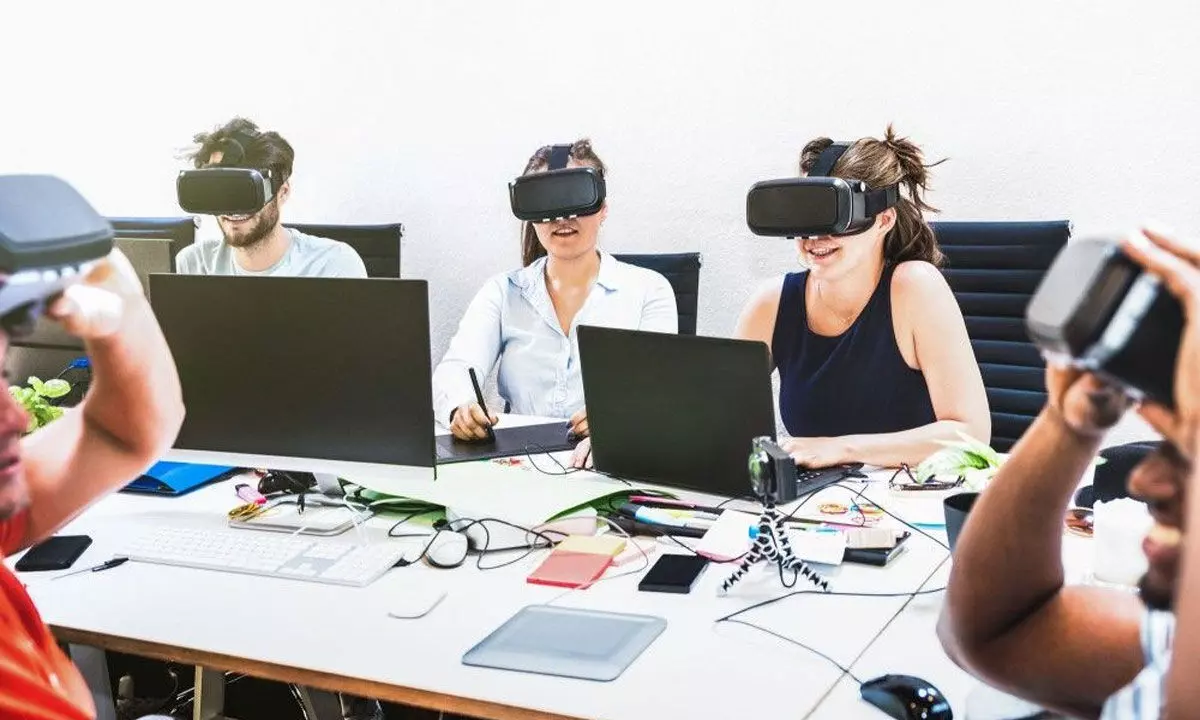Mixed reality: The future of staff training and onboarding
While mixed reality can be promising, we have to ensure that its adoption is frictionless, else, it would be hard to unlock its true potential
image for illustrative purpose

Mixed reality (MR), if used in HR management, can introduce completely new ways to engage employees in the workplace. Companies can leverage it to make their processes more interactive while onboarding employees. It can increase the level of safety during training sessions by allowing employees to try virtual assets before using the real ones.
Talking to Bizz Buzz, Sumit Sabharwal, CEO of TeamLease Hrtech, says, “Collaboration can be increased among geographically dispersed employees by providing them with an immersive virtual meeting experience. In this way, mixed reality can help deliver a better employee experience while onboarding, training and collaboration among employees.”
While mixed reality can be promising, we have to ensure that its adoption is frictionless, else, it would be hard to unlock its true potential. The first priority should be to reduce the cost of adoption so that organizations can reap a good RoI in the implementation of the technology, he said.
The requirements of hardware such as mixed reality headsets, joystick, cables, wires, etc should also be minimal. Intuitiveness and ease of use will ensure continuous adoption after the technology matures. In other words, mixed reality has to overcome a few hurdles before its usage becomes widespread in HR and other sectors.
Mixed Reality is widely used by organizations for learning, collaboration, and various operational aspects. The recent example of MR being used in employee training is of Airbus and Ford. Airbus enables assembly line employees to practice complex tasks in a virtual environment before working on real aircraft. Similarly, Ford trains engineers in vehicle design and assembly through MR, allowing them to interact with virtual prototypes.
Jayati Pardhy, HR Head, Keka, says, “With respect to remote collaboration MR enables remote teams to collaborate through shared virtual workspaces. Spatial, a MR collaboration platform, allows teams to meet virtually, manipulate 3D models, and work on projects in real time. It enhances communication and productivity for geographically dispersed teams. MR is also being used in architecture and interior designs.”
Architects showcase virtual models of buildings to clients, enabling exploration and informed decision-making. Interior designers overlay virtual furniture and décor onto real spaces, offering clients realistic visualizations.
MR is also used in medical training as it creates realistic simulations and virtual patient scenarios. Professionals can practice procedures in a safe virtual environment. Osso VR provides MR surgical training modules to improve surgeons' skills and patient outcomes.
Organisations also use MR in immersive employee onboarding programs. New employees go through virtual simulations to learn company policies, procedures, and environments. This approach enhances engagement and expedites the onboarding process. These examples demonstrate how MR enhances learning, collaboration, and operational aspects for organizations.
Sourabh Deorah, CEO, Advantage Club, says, “Human resources are undergoing a revolution as mixed reality unlocks new possibilities. Organizations that adopt mixed reality foster environments that cultivate talent and spur growth. Mixed reality revolutionizes employee onboarding by offering immersive experiences.”
Newcomers engage with their workspace, virtually meet colleagues, and assimilate company culture through engaging scenarios. Training is enriched as mixed reality broadens learning horizons, allowing employees to practice tasks with real-time feedback in a safe setting. Mixed reality removes geographical barriers in collaborations, as teams unite in virtual spaces to work on projects, brainstorm, and visualize concepts. Blending the physical and virtual realms is a springboard for organizational success. HRtech companies are at the forefront, utilizing mixed reality to fortify organizations by transforming human resources. Embrace this convergence of worlds that drives growth, innovation, and collaboration.

